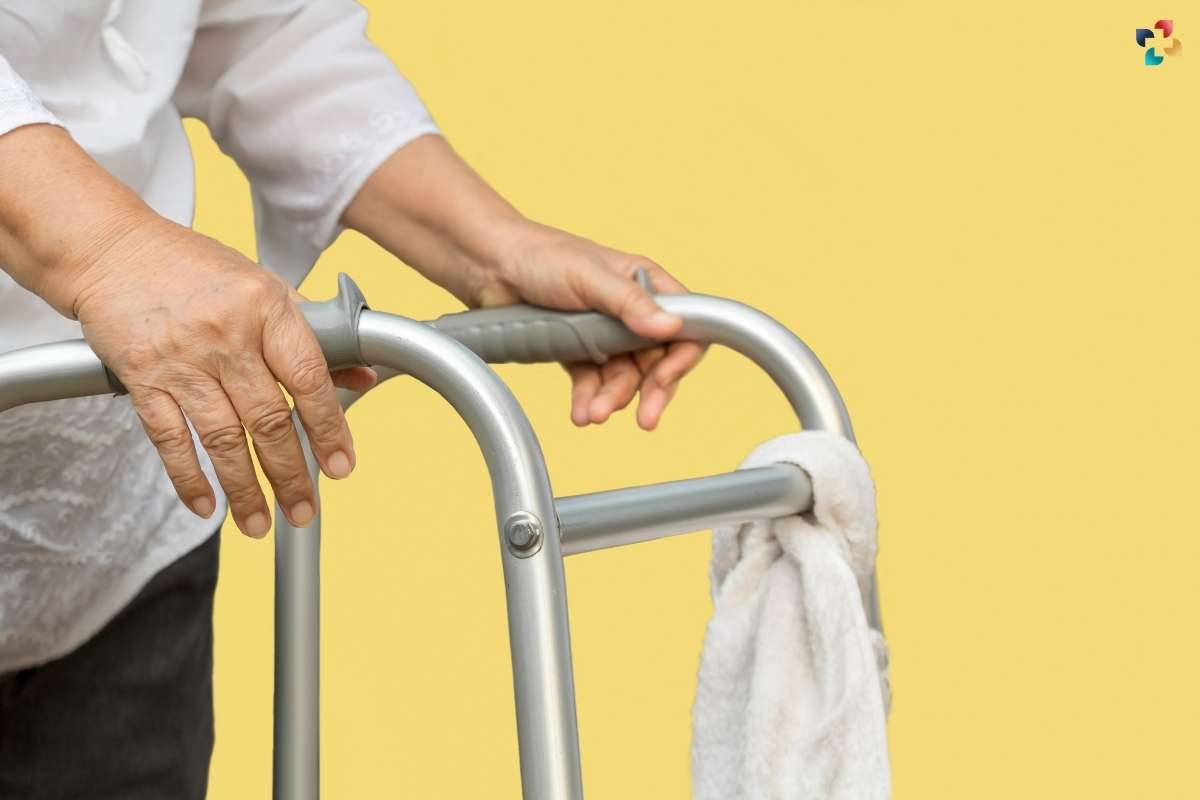Walker is of great help for people to move around after an operative procedure or for elderly people. In cases like leg instability, arthritis, and weak legs due to age a walker can save a lot of people from depending to move from one place to another. A walker comes with a variety of different features too. So, keep in mind to choose the right walker which suits your needs and you feel comfortable while using the same.
When choosing a walker the basic thing is the comfort of the user. The user must be satisfied with the features it offers, its portability, and other benefits if it offers any.
How to choose the right walker?
1. Measure your wrist height:
See what the height of your wrists is. Accordingly, choose the height of your walker when you are going to choose the right walker. The walker should not be small in height. You shouldn’t bend more than 20 degrees to get hold of the grip of the walker. Bending too much may affect your lower back. Using a small one will increase your lower back pain instead. The grip of the walker must come up to your waist.
2. Select a proper grip:

When you are going to choose the right walker you have to know about grips because grips come in different varieties. Some walkers may have plastic grips or some may have foam grips. If your hands get sweaty, you can consider buying the foam grips. At times, the grip may come off or slip from the walker after some time. The choice of grip could be anything, make sure the grip doesn’t fall off.
3. Opt for the right size:
Your height and the walker should be in alignment. Stand inside the walker to see if it is a fit for your size. There must be enough space for you when you’re standing inside the walker. If you want to choose the right walker then there are height-adjustable walkers available in the market. An oversized rollator may be troublesome for you to carry here and there. It is not aligned with your body so it can cause such difficulty.
4. Think about a foldable walker:
How portable should the walker be is important to decide? If you plan to travel often a foldable then choose the right walker. I think a foldable walker is the best option for you. There are walkers which get folded in multiple ways. It also gets easy to put them away when not in use. Think of the size of the vehicle you use when choosing a foldable one.
5. A number of wheels:
- 2 wheeled:
Two-wheeled walkers are used for patients who have instability issues in regard to gait. These can be used for patients who don’t need to put much of their body weight on the walker. This is also an important part when you are going to choose the right walker. These have 2 front wheels and 2 backsliders. These rolling walkers are better than standard ones as they are not needed to be picked up a bit from the ground. Instead, they can be slid down to move forward and backward.

- 4 wheeled:
This one has 4 wheels that rotate in a full circular motion. It also has a seat and a basket for use. This is used for patients who need help with balance. Weight-bearing is not an issue for them. The seat is useful to take breaks in between walking sessions. The basket also gives the freedom to carry things from one place to another. These are more reliable, strong, and durable. The wheels also have a turning capacity. The walker can be easily turned here and there.
Types of Walkers:
Choosing the type of walker is a question you need to ask your physical therapist or your doctor. This information helps you a lot when you are going to choose the right walker. Here are some basic types which are available:
- Standard: It is one which does not have wheels. It has four legs covered with rubber tips. This one is the most stable and doesn’t wobble. You will need to lift this walker to move it.
- Three-wheeled: This one is way lighter than the four-wheeled one. This also provides continuous support for balance. This can be best for use in compact spaces.
- Knee walker: This has a seat for your knee to rest, four wheels, and a handle. To walk you need to keep your injured knee on the platform provided, while you push with your other leg in the forward direction.
- Height adjustable: There are some walkers that have openings at decisive distances to adjust the height of the walker as and when required. The advantage of these is they can be used by both adults and children.
- Hemi walkers: These allow the user to stand on just one leg for support. The weight is transferred to one side of the body. These are more stable than a cane of course as the structure of both the cane and hemi walker is different.
- Rise assistance: The front handle of these walkers has a slope bending towards the user. If the user is sitting on a chair he can reach the lower part of the walker and pull themselves up.
Benefits of using a Walker:

- Helps in daily movements: Simple activities like sitting down and standing up become easy with the help of walkers. It gives steadiness and security to the user to do these movements.
- Helps patients with weak legs: Some patients have weak legs or less command over their legs. Walkers help them move around without anyone for assistance. It protects them from falling or getting injured.
- Allows minimal weight bearing on lower limbs: This allows the patients to not put more or excess weight on the lower part of their body. It can be used to lean over and put weight instead on it to move around. Or to use it as a support device the user can put their body weight on it and lean over to make specific movements.
Conclusion:
The selection of this device depends on a lot of factors mentioned above. Age of the user, condition of the user, mobility skills, height, weight, and size. These are the common and basic factors to be kept in mind when you are going to choose the right walker. It gives freedom to the user to move from one place to another. Hence, purchasing a walker should be a wise decision.
Also Read: For Family Caregivers: 5 Tips for Getting Help and Support







